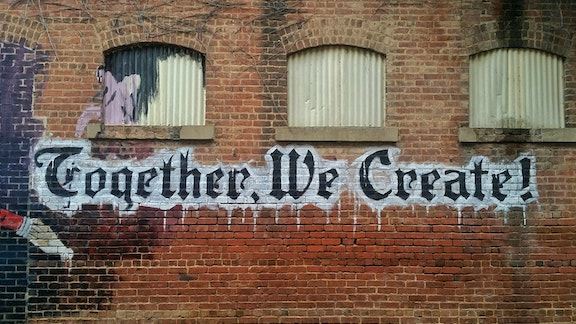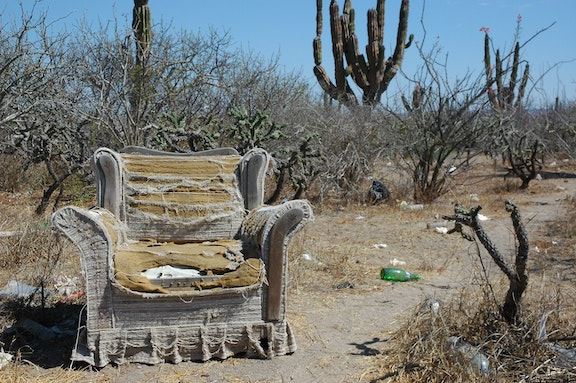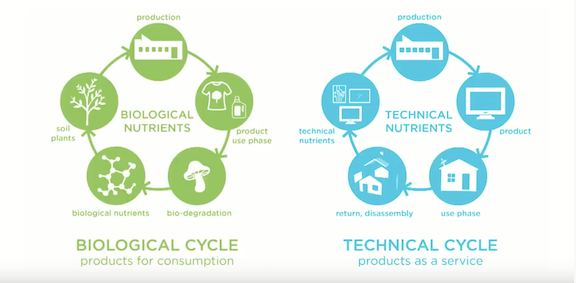I want to share a vision for Upholstery’s future, but first I want to acknowledge that things are far from normal right now.
As I write this, we're under a ‘shelter in place’ directive – staying home due to the Corona virus pandemic. I’ve been so inspired by the support & generosity within the upholstery community - online meetups, conversations on social media, and just people reaching have out have helped many of us through these days of isolation.
I have noticed, when I step away from the surreal buzz of the news & internet, that the world has slowed down.
For now.
People seem to be living more in the moment, and this gives me hope. When I look to my local community, I see neighbors uniting to help each other find on-the-ground solutions to our most pressing challenges, and I’m optimistic that we will recover and emerge stronger if we work on solutions TOGETHER.

Beyond the immediate day-to-day challenges, my thoughts go to the BIGGER PICTURE.
What changes are in store for the upholstery community and what adjustments will we have to make going forward? Of course none of us has the answer to that, but I'd like to offer some hope and an invitation.
EARTH DAY
April 22, 2020 marks the 50th anniversary of Earth Day. This is a milestone certainly worth celebrating, though the sentiment may feel restrained given the current state of affairs. Looking back, we can acknowledge there have been great advances since 1970 (and more than a few contractions).
When we consider the broader challenges facing the world – in health, economics and climate change – it’s easy to see that A LOT has to change, and quickly.

I am heartened to see evidence that this question of transformation is sparking an explosion of innovative thinking in many markets on a global scale. At the same time, I’m perplexed by the scarcity of attention given to the changes needed in the upholstered furniture industry.
How will the craft of UPHOLSTERY adapt to the unknowns as we emerge from this pandemic?
• How will we eliminate chemicals in our furniture that are compromising the health of so many people in their own homes and work places?
• How can we change economic incentives to benefit the people on the ground doing the work instead of rewarding top-down corporate lobbying interests?
• How do we intelligently handle the waste of resources that is rampant in the current ‘fast furniture’ economy?
It turns out NATURE offers some answers that address these questions on a deeper level in the context of our current economic system. To illustrate, we need to take a simplistic approach.
The LINEAR ECONOMY (what we have now)
Our current economic system is LINEAR, meaning most goods fall into the ‘Take-Make-Dispose’ model. The bulk of cheap upholstered furniture provides a perfect example – a $250 sofa gets dumped outside college housing at the end of a school year. We all know that it’s just NOT SUSTAINABLE to throw millions of tons of furniture in landfills every year, essentially treating the environment as a waste reservoir.

So how can we change this to a more sustainable system?
Linear systems are a product of the industrial age, an age of growth and discovery that began in the 18th century, riding upon a misguided belief that human civilization must somehow conquer nature. Now, as we enter the second decade of the 21st century, it is obvious that human systems are well-advised to take a cue from nature and to see ourselves as INTEGRAL to the (circular) cycles of nature and the planet.
As sustainability author Daniel Christian Wahl points out:
“We are not supposedly ‘objective’ observers outside these systems, trying to manipulate them more effectively; we are always participants (who must) shift our attitude and goal to our appropriate participation in these systems, as subjective, co-creative agents.”
The CIRCULAR ECONOMY (what is it?)
The circular economy is not a new concept, its roots dating back circa the first Earth Day in 1970. What I like best about the circular economy model is that it seeks to build prosperity long-term. Here’s the best quickie (3 minute) video illustration I’ve found (from the Ellen MacArthur Foundation).
( video)
The model encourages RE-thinking the current LINEAR (Take-Make-Dispose) economic system – moving away from depleting finite resources & producing toxic waste, and moving toward a CIRCULAR (Repair-Reuse-Renew) economy. It requires separating the biological ‘nutrients’ (derived of living systems) from the technical ‘nutrients’ (from non-living systems).
This may not represent a quick fix for the challenges we face in the near future (I’d love to hear if there’s one out there). But it’s an excellent starting point.
I love the INSPIRATION that shines through in this model, the way it frames the future in a POSITIVE way. It includes the tools we need to begin to move toward rethinking the operating system itself, and I believe the best solutions always grow from inspired thinking. The hard part is figuring out WHERE TO BEGIN on this unproven path, and accepting that we have to be in it for the LONG game.
Considering the Circular Economy in the Context of Upholstered Furniture Waste
The Two Nutrient Cycles:

Circular Economy-nutrient cycles by MBDC
1. Biological nutrients
(universal example) Food waste is biodegradable. My backyard compost-to-garden system is a great example of this, cycling waste from kitchen > compost > garden > kitchen in a continuous circle. Nothing is wasted.
(upholstery example) Certified organic cotton batting or jute webbing for upholstery would be considered a biological/agricultural nutrient. I have used both materials as mulch in my garden. I don’t use non-organic cotton materials due to pesticide + other chemical residuals present in the final product.
2. Technical nutrients
(universal example) Aluminum is infinitely recyclable and highly durable. Recycling aluminum requires only 5% of the energy used to make new aluminum from the raw ore.
(upholstery example) Steel springs for upholstery is a perfect example of a technical nutrient. Steel is cheaper to recycle than to make new, and it doesn’t lose any of its inherent physical properties during the recycling process.
3. What if it’s neither?
The biggest challenge in effectively addressing upholstery waste seems to be the fact that you just can’t put it into simple black & white terms. What if a material is not biodegradable, nor does it fit the technical cycle requirements (like polyester batting or urethane foam laced with flame retardants)? Herein lies the complication. Bedding waste presents similar challenges. Both industries incorporate many layers of different materials into a single product, some of which do not fit neatly into either category.
.jpeg)
Breaking it down to the upholstery layers
In the upholstery trade, reuse of high quality framing & soft layers is a the preferred option. Reuse delays the need to assign those materials to either a biological or a technical cycle for years or decades. The challenge lies in considering the point at which those materials reach the end of their useful life, and how they do or do not fit into the circular model:
1. A well-built furniture frame is the foundation that makes reupholstery possible. Wood is part of the biological cycle, and most metals can reintegrated as products in the technical cycle.
2. Traditional upholstery uses animal products (wool, horse hair) and plant products (coir fiber, cotton, sphagnum moss). In a circular model, these materials are considered biological nutrients at the end of their useful life, but until channels for effectively composting them are defined within a real-world system, upholsterers have no other choice but to toss them in the trash.
3. Modern upholstery most often uses synthetics (polyester, urethane foam, chemical additives) which currently have no value as technical nutrients. They are not biodegradable and certain chemicals like flame retardants, present a danger to health and natural biological systems, so it’s into the trash bin for those materials as well, once they can no longer be re-used.
4. Some modern upholstery uses natural fibers that are free of harmful chemicals (natural latex, wool & organic cotton) and ARE biodegradable. But again, the channels must be in place within a working system for the bulk of these materials to effectively return to the earth as biological nutrients at the end of their useful life.
In Summary
This radically SIMPLIFIED overview reveals some basic elements which must change if the upholstery industry is to lead the shift to a regenerative furniture economy:
1. Composting channels must be established to handle biodegradable materials
2. Toxins must be removed from the biological inputs at the manufacturing level
3. Synthetics must find channels through which to flow back into the system (or be replaced by biological materials)
4. There must be economic incentives that reward the professionals and those they seek to help (customers) on the ground, allowing for prosperity at the community level.
Upholstery is a skilled trade that has defined eras in human history, inspired creativity, and preserved tradition through the ages. It has been answering the need to recycle, reuse and repair our furniture for generations, and will remain as a valuable player in defining the future of furniture in a circular economy.

All of this plays into the National Upholstery Association's 2020-2023 Strategic Plan - specifically Goal #7, with objectives to:
• Advocate for legislative policy designating reupholstery as 'green jobs’.
• Promote inclusion of reupholstery within tax incentive programs.
• Support or lead education initiatives for reupholstery as a tool for elimination of waste within the furniture industry.
• Promote reupholstery as an intrinsic component of the circular economy.
As an industry organization, NUA has great potential to make actual changes that will benefit its members and many more. Your voice and your unique perspective are important to the success of this collaborative effort. If you’re inspired to make a difference, please join us, and include ‘Sustainability Initiatives’ in your comments on the application. Thank you!